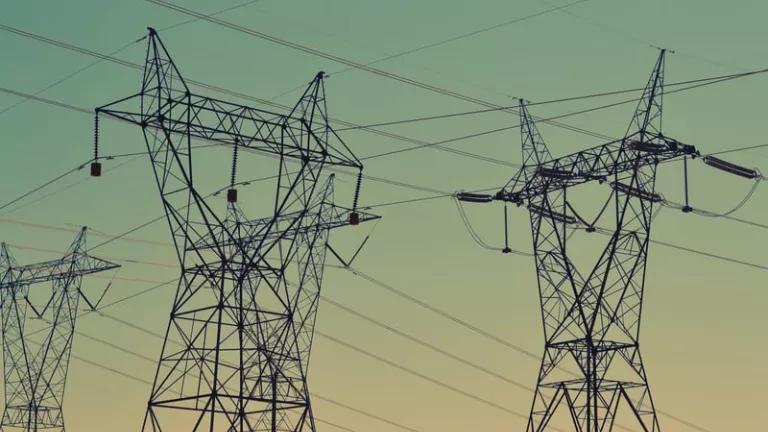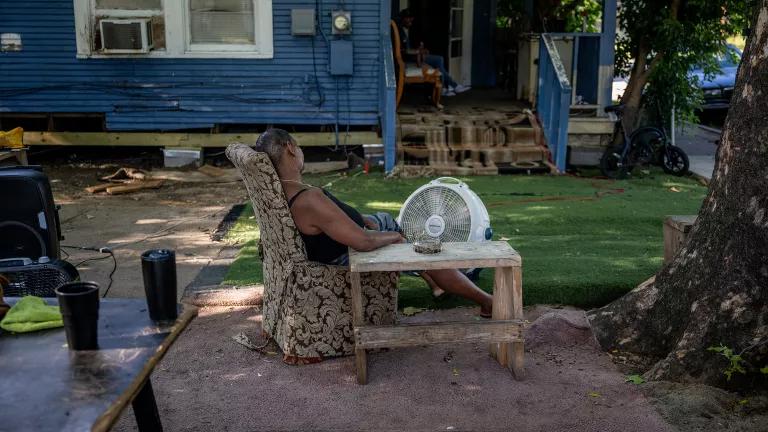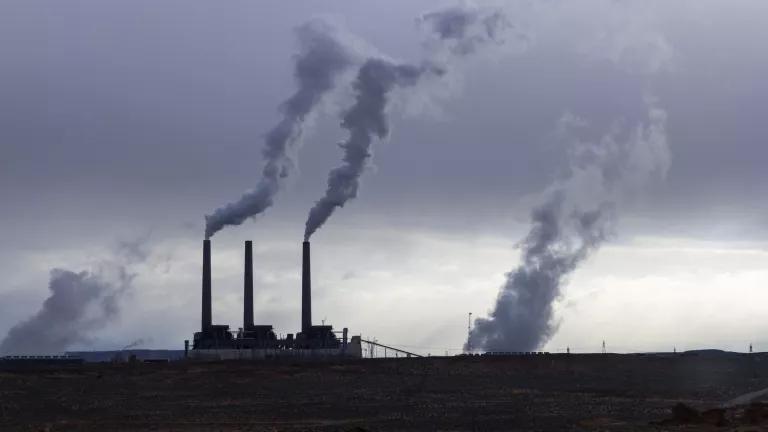Federal and State COVID-19 Utility and Rent Protections
At the start of the pandemic, many consumer, environmental, and community advocates urged both federal and state governments to undertake the responsibility of ensuring that people had access to shelter and energy in this critical time.

This blog is the second in a series of three by Schneider fellow Lizzie Avila on the topic of tenant and utility consumer protections before, during, and after the pandemic. You can find the first blog here and the third blog here.
At the start of the pandemic, many consumer, environmental, and community advocates urged both federal and state governments to undertake the responsibility of ensuring that people had access to shelter and energy in this critical time. Energy Efficiency for All (EEFA) published a Pandemic Response Guide for states in April 2020 detailing specific policies to enact that would protect renters and utility consumers alike. Calls to action from EEFA for state and local governments included:
- Shutoff moratoriums: Enact a comprehensive moratorium on water, electricity, and gas utility disconnections during the declared state of emergency and a recovery period that applies to all utilities
- Utility assistance: Expand access to utility assistance funds by increasing funding, modifying eligibility requirements, allowing for cross-eligibility, and enabling online enrollment. Also expand bill payment assistance and set up arrearage forgiveness
- Late fees: Suspend all late fees and penalties due to non-payment
- Eviction Moratoriums: Immediately suspend eviction filings, hearings, and enforcements impose an eviction moratorium that covers every type of eviction case and include penalties and for moratorium violators
- Rent Assistance: Provide sufficient levels of rent payment assistance to ensure that all renters can afford their housing costs without additional debt and that building owners have the resources necessary to continue to maintain their properties
Responses from the federal and different state governments varied in comprehensiveness and duration, and there were a few exemplary responses that approached the ambitious policy recommendations set by the EEFA guide.
Federal Response
The federal government took an unprecedented step in September of 2020 when due to the ongoing threat of the COVID-19 pandemic. The Center for Disease Control (CDC) implemented a federal eviction moratorium to supplement pre-existing state eviction moratoriums and protect public health. This was originally set to expire in December of 2020, but was extended through January 2021 and then again through July 2021.
While the moratorium did end on July 31st, the CDC stepped in three days later thanks to the fast work of many community organizers, including Missouri State Representative Cori Bush who slept on the stairs of the Capitol building to protest the expiration and advocate for continued eviction protections. The CDC responded with a less comprehensive eviction moratorium that was to last until October 3rd 2021 and cover those living in U.S. counties with “substantial or high” rates of COVID-19 transmission. This final renewal was critical news for housing advocates and renters alike, especially in light of how quickly eviction proceedings resumed during the three-day coverage gap in August-- but was unfortunately struck down by the Supreme Court on August 27th 2021. The Court stated that legislative action was the only way to continue the moratorium.
Overall, the federal moratorium was effective at preventing a majority of evictions. However, there were big gaps in its protection, including:
- Lack of coverage for evictions for reasons other than nonpayment, and in jurisdictions without Just Cause Eviction laws tenants are evicted more easily
- No defense against evictions of those in areas that were deemed to not have substantial COVID-19 community spread
- The abrupt and ill-timed end to moratorium, which put an estimated 11 million of tenants with backlogged rent at risk
In addition to the eviction moratorium, the federal government approved $46.5 billion dollars to be distributed to states to help fund and expand rental assistance programs and help create new programs that help with both utility and rental assistance. The distribution of these funds has been very slow overall, with only $5.1 billion being distributed as of August 2021. About 2.8 million households have applied for aid from their state programs, while only ~500,000 have actually received it.
Confusing and changing federal guidance was issued on how and when states should spend this money, which was intended to protect against fraudulent applications and process requests for assistance in a triage system, but instead contributed to the slow rollout of federal funds leaving millions at risk. Some improvements, such as the allowance of self-attestation forms as valid documentation of income or the requirement to use 65% of funding by the end of September, help to speed up and simplify the application process. But, even with improvements to federal guidance, the use of federal funding still lies in the discretion of states, leading to unreasonably slow and unjust distribution rates.
State Response
State response to COVID-19 with regards to utility consumer and renter protections varied greatly. At the start of the pandemic, 38 states instituted their own eviction moratoriums, and 33 states instituted utility shutoff moratoriums, either through PUC statutes, executive orders, or legislation. Many states got rid of their eviction moratoriums once the federal moratorium was put in place, and many states ended their utility shutoff moratoriums before 2021, even as the pandemic continued. However, several states had exemplary policies that were and some that continue to be effective at protecting utility consumers and renters in addition to federal interventions.
New Jersey had several effective policies, including a state shutoff moratorium that, while it technically ended in June 2021, will protect utility consumers through January 1st 2022 because it calls for a 6 month grace period. This moratorium was passed via executive order, and was applicable to all utility companies, including private and municipally owned utilities.
In addition to forbidding shutoffs until 2022, the New Jersey legislature passed SB 3326, a law requiring utility companies to give notice to all of their customers of what assistance is available to them, including moratoriums, deferred payment agreement programs, bill payment assistance programs, and arrearage forgiveness programs. This bill, which will go into effect October 1st 2021, ensures that the 6 month grace period given by the state moratorium can be used as time for households to get set up on payment plans and other assistance programs.
The New Jersey Board of Public Utilities also expanded eligibility for their Universal Service Fund, a program that provides credit so low-income customers do not have a high energy burden-- meaning that they spend no more than 6% of their annual income on energy. Previous income limits required that applicants make 185% or less of the Federal Poverty Line (FPL), while new income limits say that applicants can make up to 400% of the FPL and still be eligible.
Minnesota, which scored 4/5 stars on the EvictionLab COVID-19 housing policy scorecard, had a phased relaxation of their eviction moratorium, with households with pending rental assistance applications remaining protected from eviction until June 2022. Minnesota also had a docket in their PUC that prevented utility shutoffs until August 2nd 2021, which also prohibited any related late fees, service charges, reconnection fees, and reporting of credit to agencies.
Recently, Minnesota enacted the Energy Conservation and Optimization Act (ECO) which includes updates to the State’s Conservation Improvement Program (CIP), including funds to help with pre-weatherization upgrades in low-income households, such as dealing with mold and asbestos, and an increase to the minimum spending requirement for low-income CIP programs. Weatherization in these homes will ultimately lead to greater energy affordability, along with Minnesota’s other initiatives.
There are a few states who have distributed the federal rental assistance money more effectively, including Illinois, which has distributed $252 million of the $500 million they were granted, paying an average of $8,850 to each household granted assistance and up to $25,000 for landlords depending on how much income they lost. The Illinois Housing Development Authority achieved such efficient fund distribution due to in-house “centralized, assembly-line model of processing applications in-house” and outside support with case management and reaching applicants by nonprofit partners.
Future Directions
The pandemic showed a glimpse of transformative policies that are needed not only during a public health crisis, but before and after. Additional assistance money may eventually run out and moratoriums may end, but the pandemic continues to be a problem. Expedited distribution of rental assistance and the reimposing of eviction and shutoff moratoria will be key, along with continuing to evaluate the details of these policies that keep people in their homes and with access to energy, to create a future where housing and energy are treated as human rights.
About the Author
Lizzie Avila is one of the summer 2021 Schneider Fellows at the NRDC working with Energy Efficiency for All in the Midwest. She is a rising junior at Stanford University studying Earth Systems and Urban Studies. During her time at the NRDC, Lizzie has worked on projects tracking COVID-19 related shutoff and eviction related policies, researching public utility commission reform, and working on a rate case with the Missouri EEFA coalition. After college, she hopes to pursue environmental law and work as a litigator at an environmental advocacy group. In her free time, Lizzie loves backpacking, reading fantasy novels, baking, and crossword puzzles.



